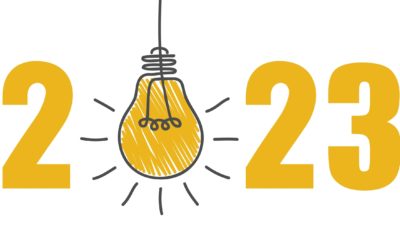School may be out, but our small business email marketing class is in session! Today we’re focusing on eliminating the annoying email habits that can turn your campaign into a nuisance, or worse, get your accounts suspended altogether.
Here are seven tips that will help you score an A+ with your small business summer email campaigns.
Bonus Content: Get a copy of our 2016 Marketing Survival Kit.
1. Show Up on Time
You wouldn’t show up late to class, interrupt the lesson and start asking questions, so why do it to your email list?
Automated email marketing (like what we do for our customers) is one way to ensure emails always reach your customers at the most opportune times. But you can also do it the old fashioned way — by gathering information.
Begin by choosing a specific day and time for your marketing emails. Follow this schedule consistently for a while to get a baseline reading on audience response. Then, try changing up the variables one by one to see if your open rates improve.
Depending on your clients, timing may not make a significant difference in your campaign results. But if sending emails early Wednesday morning or late Thursday evening seems to boost audience response, you can use that information to improve future campaign results.
2. Don’t Be Overly Emotional
In school, emotional outbursts are rarely tolerated. The same is true of your marketing emails. Avoid:
- Overusing exclamation marks!!! One and done is the rule here.
- Sending too many emails marked “urgent.” If everything is urgent, nothing is urgent.
- Writing in ALL CAPS. Don’t YELL at your customers!
- Abusing bold or italic fonts. Save these for critical information only.
In general, business correspondence should use traditional fonts, colors and sizes. This is the best way to ensure your emails are easy to read. When in doubt, go with a black, 10- or 12-point type in a classic font, like Times New Roman.
3. Keep Assignments (Emails) Short and to The Point
If you were assigned a one-page report on the history of Texas, your instructor would be confused and unlikely to read your seven-page thesis on Shakespearean literature. When crafting your email campaigns, keep in mind that your readers, much like your teachers, have plenty to read and are likely to skim your work for relevant content.
To communicate your point quickly and effectively and reduce the likelihood of losing the reader’s attention, we suggest limiting your emails to 250-300 words or less. To accommodate skimmers, break your message down into short, easily digestible paragraphs and use headings, bullet points and numbered lists where possible to help catch the eye.
4. Start Assignments (Emails) With a Strong Title (Subject Line)
When it comes to subject lines, do your homework. Your open rate depends on it.
About 50 percent of consumers use the subject line to determine whether or not your email gets opened, deleted or marked as spam. The latter is a dangerous move that can spoil future marketing campaigns, as many email providers will block the IP address of repeat spam offenders.
So how do you increase your chances of getting an open? First, your subject line should be a clear indication of what your message will detail. Never bait and switch.
Be clear, be concise and — above all — enticing. A great subject line should compel your customers to click through, read on and hopefully take action! In fact, think of the desired action first. What is the goal of the email? With the goal in mind, you can work backwards toward crafting the perfect subject line.
5. Look the Part
The outfit you select on your first day of school is a big deal. It’s the first impression that your class will make of you. Your emails work similarly.
Once opened, your marketing emails will (hopefully) portray a visually appealing format that’s clean cut and easy to follow.
That means having:
- A professional look
- Well written copy
- Zero typos
- High-quality images
6. Don’t Speak Out Too Often
Speaking out of turn and other repetitive disruptions don’t go over well in the classroom. In most cases, the teacher will remedy the situation by removing the problem. It’s no different in the world of email marketing. Sending emails too often can cause subscribers to unsubscribe or even report you as spam.
Though selecting the right intervals can be a challenge, research has suggested that the majority of consumers prefer to receive monthly promotional emails, and over half of those surveyed said they would read a weekly email from a brand they value. For best results, plan your email marketing schedule using data-driven analytics to determine client preferences and strike the perfect balance.
7. Watch Your Tone
Acting too friendly or curt with your teacher could land you in detention. Apply the same logic to your email content.
If your message is too informal it could come across unprofessional. This includes the use of emojis, colored fonts or popular text abbreviations, such as “lol,” “imo,” or “tbh.” If it’s worth saying, it’s worth typing out!
That doesn’t mean you can’t add a bit of personality to your emails and show enthusiasm where appropriate. Just write with your audience in mind, and take care not to exclude anyone who may face a language barrier or generation gap.
Wrap-up
Whether you want to attract new business or stay top of mind with your current clients, email marketing is arguably the best way to get long-term results. The trick is to always do your homework to and submit only the best work to your email list.
Class dismissed!
Want to enjoy your summer break instead of managing email and social campaigns? Let us do the work for you!



![Better Email Etiquette Equals Better Marketing Results [16 Rules]](https://www.outboundengine.com/wp-content/uploads/shutterstock_411184843-1-400x250.jpg)

